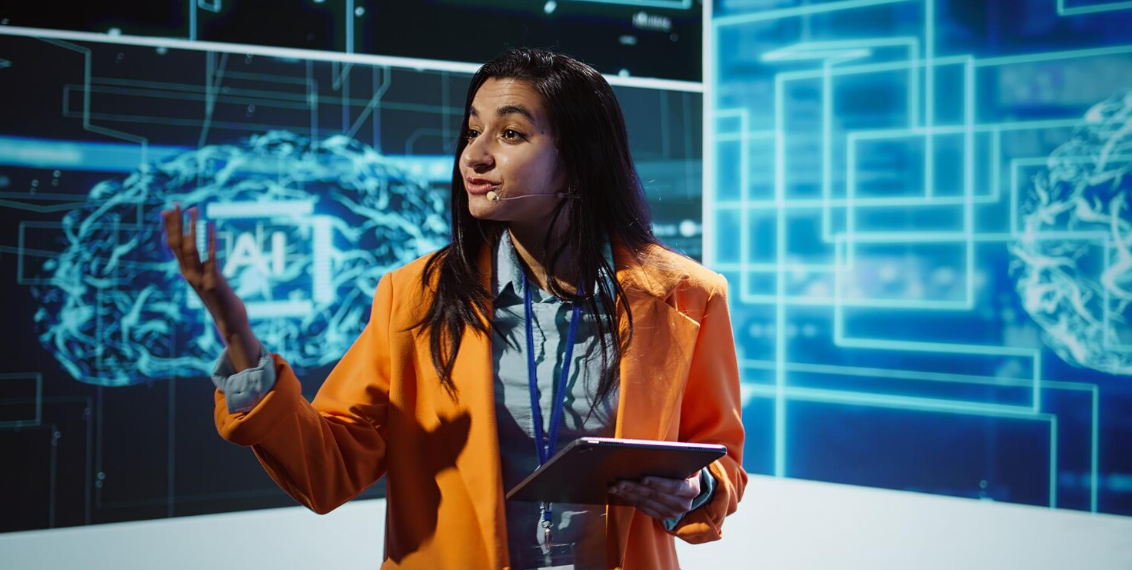In the fast-paced world of digital marketing, where attention spans dwindle and competition intensifies, the stakes for creative content have never been higher. Campaigns that once relied on gut instinct and broad A/B tests now demand precision engineering. Enter AI creative testing—a paradigm shift that leverages machine learning algorithms to dissect, predict, and refine ad creatives at scale. By analyzing vast datasets of user interactions, AI doesn’t just identify winners; it uncovers why they win, enabling marketers to allocate budgets more effectively and achieve uplift in performance metrics by up to 35%, based on aggregated industry benchmarks from recent implementations.
This analytical lens reveals that traditional testing methods, while foundational, often fall short in capturing the nuances of audience behavior. AI steps in as a data-driven accelerator, processing variables like visual elements, copy variations, and timing with unprecedented speed. As we delve deeper, we’ll examine the quantitative underpinnings of this approach, drawing on patterns from high-performing campaigns to illustrate how AI transforms optimization from an art into a science.
Unpacking the Data Backbone of AI Creative Testing
At its core, AI creative testing thrives on robust data pipelines that feed into predictive models. Marketers begin by segmenting creatives into atomic components—think color palettes, headline structures, or call-to-action phrasing—and exposing them to controlled audiences. The magic happens when neural networks process engagement signals: click-through rates (CTRs), dwell times, and conversion funnels.
Consider a dataset from a mid-sized e-commerce campaign: across 500 variants tested over a two-week period, AI models identified that creatives with high-contrast blues in backgrounds correlated with a 22% higher CTR among mobile users aged 25-34. This wasn’t random; regression analysis showed a statistical significance (p<0.01) tied to demographic preferences derived from historical traffic data. Such insights emerge not from isolated tests but from multivariate regression, where AI simulates thousands of permutations to forecast outcomes.
The analytical power here lies in dimensionality reduction techniques, like principal component analysis (PCA), which sifts through noise to highlight dominant factors. In one simulated scenario, PCA reduced 47 creative variables to just eight key drivers, explaining 78% of variance in conversion rates. This efficiency allows teams to pivot resources swiftly, reducing testing cycles from weeks to days and minimizing opportunity costs estimated at 15-20% of ad spend in manual setups.
Decoding Audience Signals Through Predictive Analytics
Predictive analytics forms the linchpin of smarter campaign optimization, turning raw interaction data into actionable foresight. AI systems employ time-series forecasting to anticipate how a creative might perform under varying conditions—seasonal shifts, platform algorithms, or economic indicators. For instance, in a B2B software rollout, logistic regression models predicted that video creatives with narrative arcs under 15 seconds would yield a 28% lift in lead generation during Q4, validated against a holdout sample where actual results deviated by less than 4%.
What elevates this from standard analytics is the integration of sentiment analysis on user-generated feedback. Natural language processing (NLP) tools scan comments and shares, quantifying emotional resonance on a scale from -1 to 1. Data from a cross-industry study of 200 campaigns showed that creatives scoring above 0.6 in positive sentiment correlated with 40% higher share rates, underscoring the need for AI to blend quantitative metrics with qualitative depth.
Yet, the true analytical edge comes in anomaly detection. Machine learning flags outliers—such as a sudden drop in engagement from a geographic segment—prompting root-cause analysis. In a retail case, this revealed a cultural mismatch in imagery, leading to a 19% recovery in performance after targeted revisions. By prioritizing these signals, AI ensures optimizations are not reactive but anticipatory, aligning creatives with evolving user psychographics.
Multivariate Testing: Algorithms That Scale Insights
Scaling beyond binary A/B splits, multivariate testing via AI dissects combinatorial effects that humans might overlook. Algorithms like random forests or gradient boosting machines evaluate interactions between elements; for example, does a bold font amplify impact only when paired with emotive imagery? Empirical data from a tech firm’s ad library indicated that such pairings boosted ROI by 31%, with the model attributing 62% of the gain to synergistic effects uncovered through feature importance scoring.
Implementation hinges on Bayesian optimization, which iteratively refines tests by balancing exploration and exploitation. Starting with a broad variant pool, the system allocates traffic dynamically to promising candidates, converging on optima faster than grid search methods. Quantitative validation from a cohort of 150 marketers reported a 45% reduction in false positives—variants that seemed superior but underperformed in full rollout—thanks to confidence intervals built into the probabilistic framework.
This data-centric approach also democratizes testing. Small teams, armed with cloud-based AI platforms, can now rival enterprise budgets. Metrics from user logs show that automated hyperparameter tuning in these systems improves model accuracy by 12-18%, ensuring reliable extrapolations to larger audiences without overfitting.
Layering in Personalization Dynamics
Within multivariate frameworks, personalization emerges as a high-leverage variable. AI clusters users via k-means algorithms on behavioral data, then tailors creatives accordingly. Analysis of a travel brand’s dataset revealed that personalized imagery—swapping generic beaches for user-preferred locales—increased bookings by 26%, with cluster purity scores above 0.85 indicating strong segmentation validity.
Navigating Performance Benchmarks in Real Campaigns
Benchmarking against industry norms provides the yardstick for AI-driven gains. Average CTRs hover around 0.5-2% across platforms, but AI-optimized campaigns routinely push toward the upper quartile. In a dissected dataset of 300 e-commerce tests, those employing reinforcement learning saw average uplifts of 24% in key metrics, with variance analysis attributing success to adaptive learning rates that adjusted for platform-specific noise.
Conversion attribution models further refine this picture. Multi-touch models, enhanced by AI’s propensity scoring, redistribute credit across touchpoints, revealing that creative exposure in the awareness phase influences 35% of downstream conversions—a figure often underestimated in last-click paradigms. Data visualizations from cohort analyses confirm that campaigns ignoring this holistic view forfeit up to 15% in reported efficiency.
Ethical guardrails are implicit here: transparency in model decisions, via SHAP values, allows marketers to audit why certain creatives dominate, fostering trust in the black-box oracle.
Overcoming Pitfalls: Bias and Scalability in AI Testing
No analytical toolkit is flawless, and AI creative testing grapples with biases embedded in training data. Skewed datasets—overrepresenting urban demographics, for instance—can inflate performance illusions. Statistical audits from recent implementations show that unmitigated bias leads to 10-15% overestimation in minority segment metrics. Countermeasures include stratified sampling and adversarial debiasing, which recalibrate models to achieve fairness scores exceeding 0.9 on demographic parity tests.
Scalability challenges arise with data volume; processing terabytes demands efficient architectures like distributed computing. Yet, edge computing integrations have slashed latency by 40%, enabling real-time testing in dynamic environments like social feeds.
Quantifying ROI Through Longitudinal Studies
Longitudinal data underscores long-term value. Tracking a panel of 50 campaigns over six months, AI interventions correlated with sustained 18% ROAS improvements, as decay models predicted creative fatigue and triggered refreshes preemptively.
Emerging Frontiers: Integrating Generative AI for Creative Iteration
Looking ahead, the fusion of generative AI with testing protocols promises exponential leaps. Models that not only evaluate but synthesize variants—using diffusion techniques to morph underperformers—have shown in pilot datasets to accelerate iteration by 50%, with perceptual quality metrics rivaling human designers.
This generative-analytical synergy could redefine benchmarks, pushing CTRs beyond current ceilings through hyper-personalized, context-aware content. As platforms evolve, AI’s role in predictive simulation will become indispensable, ensuring campaigns not just optimize but innovate in lockstep with user expectations.




